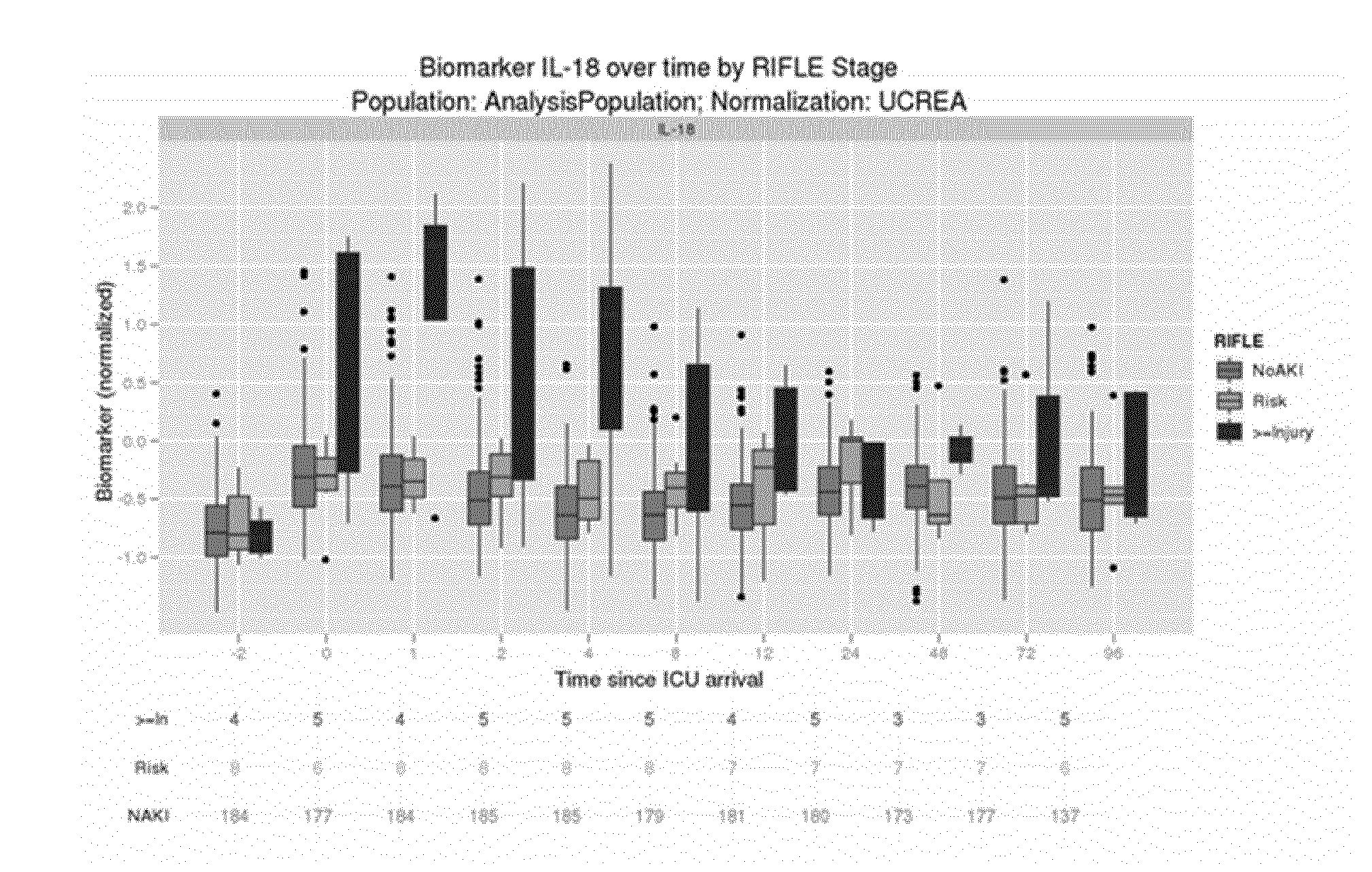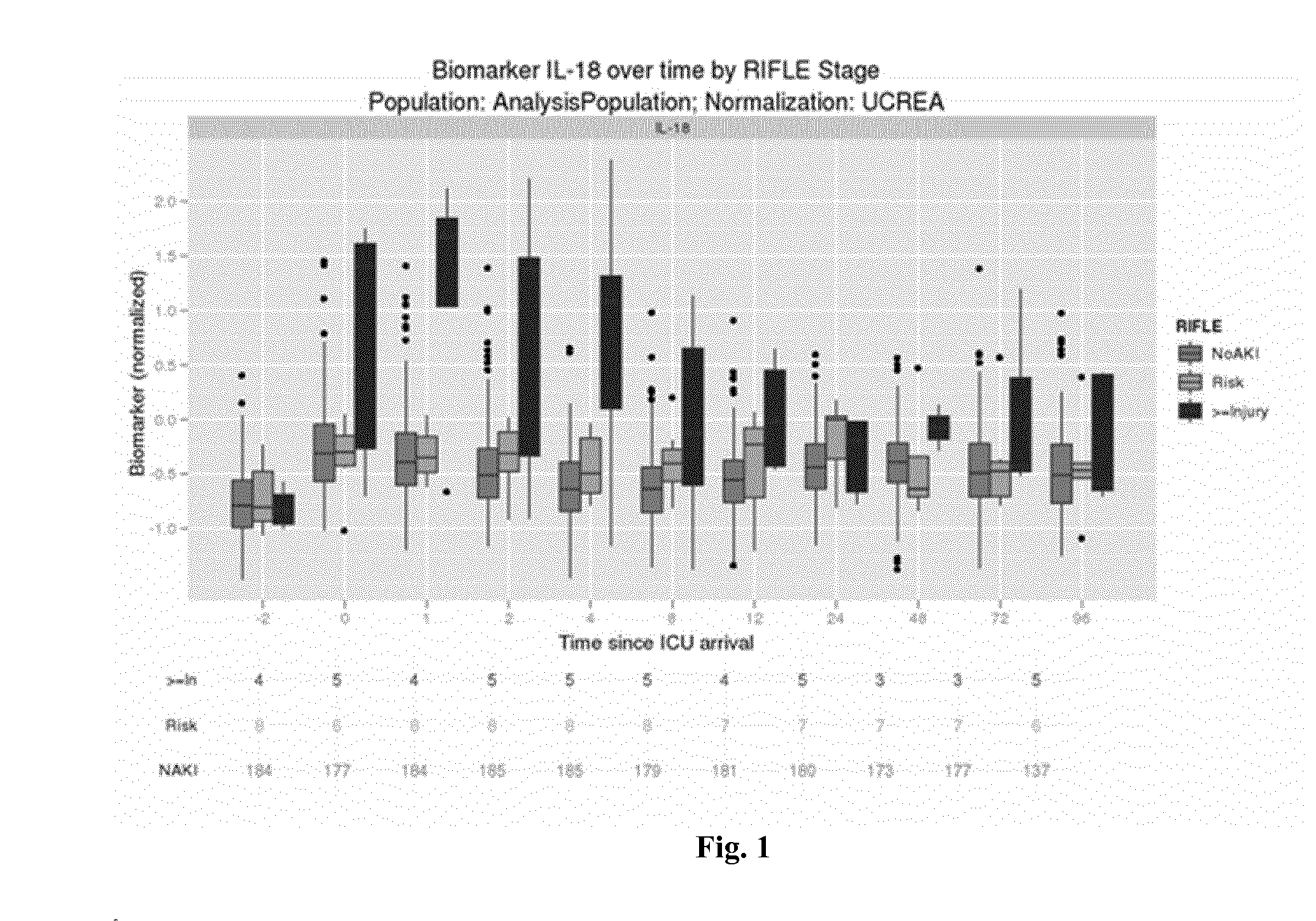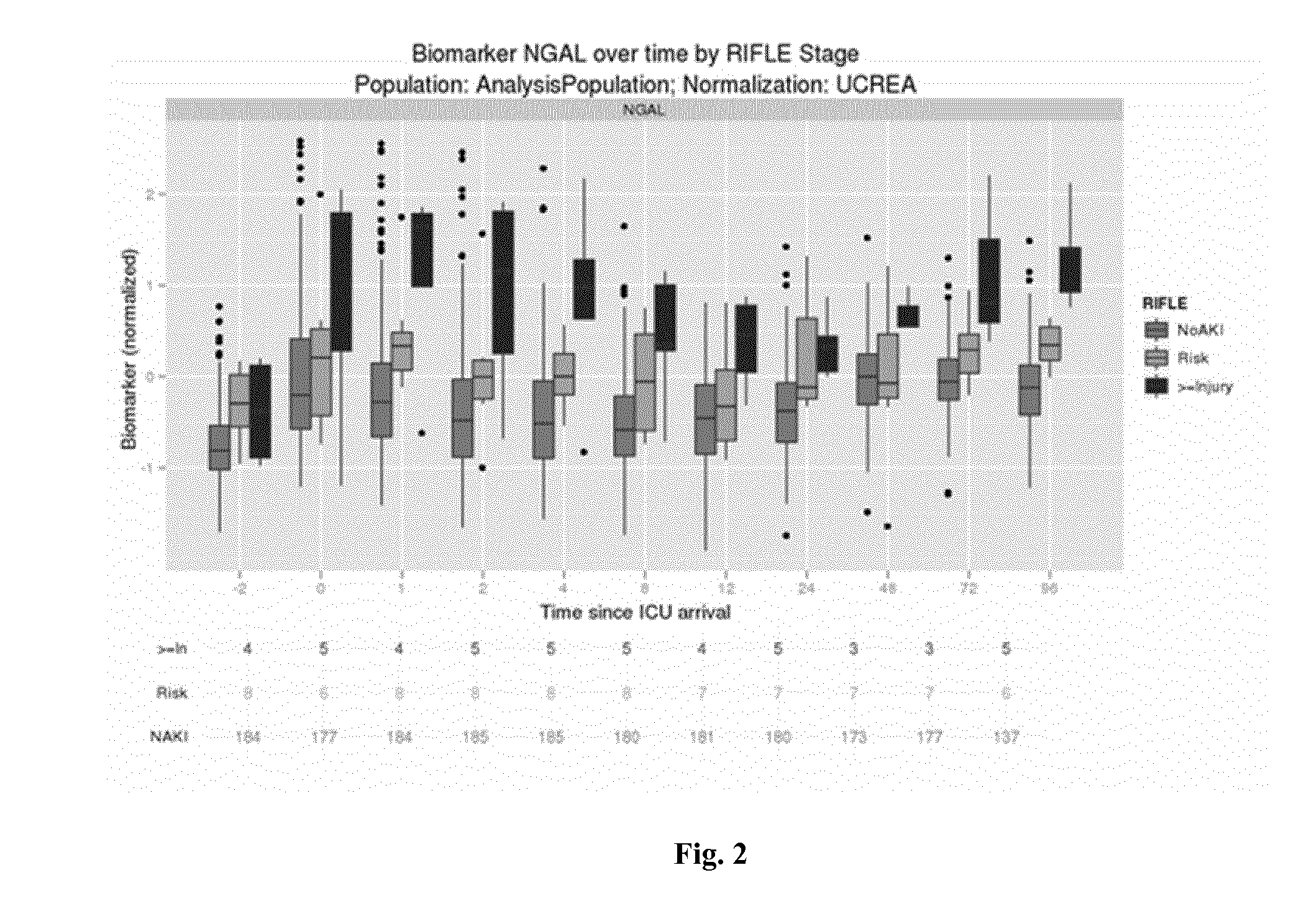Acute kidney injury
a kidney injury and acute technology, applied in the field of acute kidney injury, can solve the problem of not being able to diagnose acute kidney injury (aki) quickly
- Summary
- Abstract
- Description
- Claims
- Application Information
AI Technical Summary
Benefits of technology
Problems solved by technology
Method used
Image
Examples
example 1
Overview of Clinical Data
[0148]The data for this analysis was collected in an observational, prospective, exploratory study in patients having cardiopulmonary bypass surgery. Patients with written consent aged 18 years or of any gender who underwent elective surgery could be included in the trial. Out of the patients enrolled in the trial, a patient had to meet the following criteria in order to be evaluable in our analysis:[0149]The patient completed the study[0150]Has a baseline / screening serum creatinine value as well as at least two serum creatinine measurements in the 24 to 72 hour time widow. As serum creatinine is commonly only taken once every 24 hours, for practical purposes we viewed this criterion as fulfilled if the serum creatinine were in the 12 hour to 84 hour window.[0151]The patient has at least two collected urine samples at the 1, 2, 4 or 8 hour time points[0152]The patient has at least one urine sample collected at the 12, 24 or 48 hour time points.
[0153]In the s...
example 2
Biomarkers Under Consideration and Preprocessing
[0161]For each biomarker we performed certain pre-processing steps before using them in the analysis. Due to the sensitivity of the assay used, it can happen that a marker in urine is below the limit of detection and therefore no value reported or below the limit of quantitation (for which a value may be reported). In both these cases, we replace the measured value with a value equal to half the limit of quantitation for this biomarker and sample lot. The resulting measurement is in the follow referred to as the pre-processed measurement.
[0162]In our following analysis, we use this pre-processed measurement as well as a urinary creatinine (UCREA) normalized-measurement. For this normalization, the pre-processed measurement of urinary creatinine from the same urine sample is being used. The normalization is being performed by dividing the pre-processed biomarker measurement in urine by the pre-processed urinary creatinine measurement fr...
example 3
Univariate Assessment of Models
[0165]For each biomarker under consideration, we calculate an Area under the Receiver Operating curve (AUC) with respect to two binary endpoints. In the first assessment, we compare patients classified as “Injury” or “Failure” against patients classified as “No AKI” or Risk”. In the second assessment, we exclude patients classified as either “Injury” or “Failure” and only compare patients classified as “Risk” against patients classified as “No AKI”.
PUM
| Property | Measurement | Unit |
|---|---|---|
| time | aaaaa | aaaaa |
| time | aaaaa | aaaaa |
| time | aaaaa | aaaaa |
Abstract
Description
Claims
Application Information
 Login to View More
Login to View More - R&D
- Intellectual Property
- Life Sciences
- Materials
- Tech Scout
- Unparalleled Data Quality
- Higher Quality Content
- 60% Fewer Hallucinations
Browse by: Latest US Patents, China's latest patents, Technical Efficacy Thesaurus, Application Domain, Technology Topic, Popular Technical Reports.
© 2025 PatSnap. All rights reserved.Legal|Privacy policy|Modern Slavery Act Transparency Statement|Sitemap|About US| Contact US: help@patsnap.com



